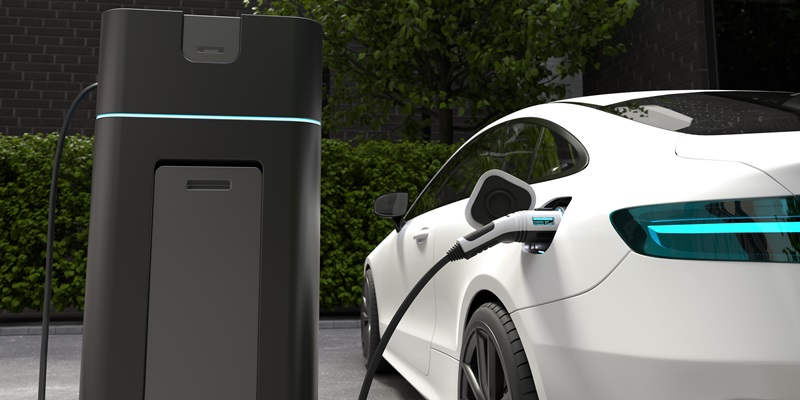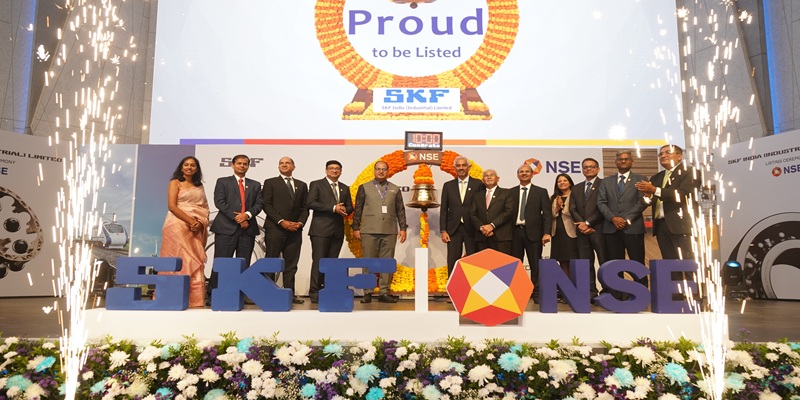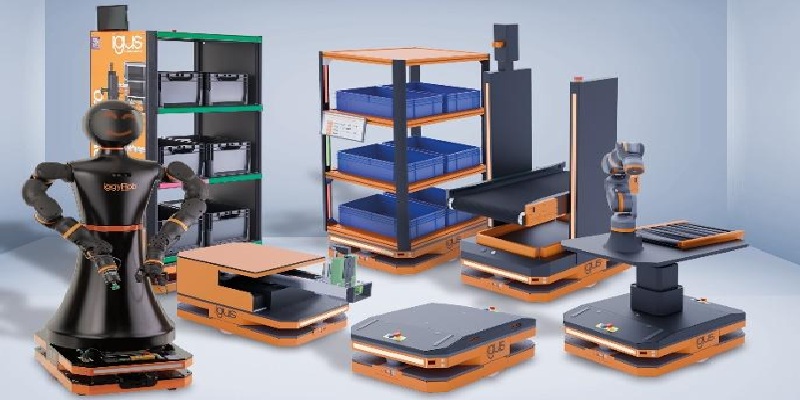Schedule a Call Back
Can India's clean mobility run on clean power: Manoj Kumar Singh
 Articles
Articles- Mar 18,25

India stands at the threshold of a transformative green revolution where electric mobility and renewable energy converge to create a sustainable future unprecedented in scale and impact. With EV sales soaring to 1.9 million units in 2024, a robust 24.5% year-over-year growth, India is not just adopting clean transportation; it's pioneering an integrated ecosystem where green mobility and clean power reinforce each other in a virtuous cycle of sustainability.
Source: EV Ready India
India's green mobility renaissance
Since 2015, India has embarked on an ambitious journey toward electric mobility through visionary initiatives like the PM E-Drive scheme with its Rs 109 billion allocation and the highly successful FAME India Scheme Phase-II, which has empowered over 1.6 million electric vehicles on Indian roads. The rapidly expanding network of 25,202 charging stations represents not merely infrastructure but the foundation of a new energy paradigm.
Source: Press Information Bureau
This remarkable progress reflects India's unwavering commitment to sustainable transportation. The country is witnessing a green mobility renaissance that extends beyond vehicle electrification to encompass a complete reimagining of how we power movement in the 21st century.
Synergy of clean power and green mobility
The true genius of India's approach lies in recognising that green mobility and clean power are two sides of the same sustainability coin. By developing these systems in tandem, India is creating a powerful synergy that amplifies the benefits of both.
India's renewable energy achievements provide the perfect foundation for this integration. Having surpassed 200 GW of installed solar capacity, with an impressive addition of 24.5 GW in 2024 alone, the country possesses the clean energy resources to power a truly green mobility revolution. The 53% surge in rooftop solar installations and extraordinary 197% growth in off-grid solar solutions demonstrate India's capacity to generate clean power at both utility and distributed scales.
This abundant renewable capacity presents an unprecedented opportunity to create a mobility ecosystem that is clean from source to wheel, where electric vehicles run on sunshine and wind rather than distant coal plants.
EVs as energy innovators
Perhaps the most exciting aspect of India's green mobility future is the evolution of electric vehicles from simple transportation tools to sophisticated energy assets. Through vehicle-to-grid (V2G) technology, India's growing EV fleet will become a nationwide network of mobile power banks, capable of storing renewable energy during generation peaks and returning it during high demand periods.
Imagine millions of electric cars, buses, and two-wheelers collectively forming a massive distributed battery system that smoothens renewable energy intermittency while providing transportation. This vision transforms the traditional one-way relationship between vehicles and energy into a dynamic partnership where EVs become active contributors to grid stability and clean power accessibility.
Pioneering policy framework
India's policy vision has created a fertile environment for this clean energy-green mobility integration. The revolutionary Green Energy Open Access (GEOA) policy has democratised renewable energy access, currently 26 states and Union Territories have notified, catalysing unprecedented investments and market growth.
The Ministry of Power's forward-thinking Guidelines for Battery Swapping and Charging Stations further accelerate this integration by promoting innovative approaches to EV charging. By embracing battery swapping alongside traditional charging, India is creating a diverse and resilient green mobility ecosystem that adapts to various user needs and infrastructure contexts.
These initiatives align with India's ambitious Panchamrit climate commitments, including 500 GW of non-fossil capacity by 2030 and net-zero emissions by 2070, demonstrating how green mobility serves as a cornerstone of the nation's broader sustainability vision.
Smart Cities as sustainability showcases
India's smart city initiatives serve as living laboratories for the integration of clean energy and green mobility. The successful implementation of 7,502 smart city projects worth Rs 1,502.85 billion demonstrates how urban environments can become sustainability showcases where multiple green technologies converge.
The emergence of integrated street furniture that combines solar-powered EV charging stations with digital connectivity infrastructure represents the physical manifestation of this integration. These elegant, multi-function installations not only maximize urban space but create visible symbols of India's clean, connected future.

Source: Smart City Mission
Economic leadership through green innovation
India's integrated approach to clean energy and green mobility positions the country for economic leadership in the global sustainability transition. The localisation initiatives under the National Mission on Transformative Mobility and Storage are creating domestic manufacturing capabilities across the entire EV value chain, from batteries to charging systems to vehicles themselves.
This green industrialisation strategy is generating high-quality employment opportunities while reducing dependency on imported fossil fuels. As global markets increasingly demand sustainable solutions, India's early mastery of integrated clean energy and green mobility systems creates significant export potential and positions the country as a solution provider to the world.
Zero-emission vehicles to zero-emission power
India stands at the precipice of a revolutionary breakthrough, a mobility ecosystem where every electric kilometre is powered by clean, renewable energy. This vision transcends the traditional EV narrative by closing the sustainability loop: vehicles that emit nothing on the road charged by energy that emits nothing at the source.
This complete green circuit represents the crown jewel of India's sustainable development strategy. When sunlight and wind directly power our transportation, we don't merely reduce emissions—we eliminate them entirely while building energy sovereignty. Every solar-charged EV becomes a symbol of India's innovation leadership and commitment to authentic sustainability.
Creating the solar-powered mobility revolution
The infrastructure for this transformation is rapidly taking shape across India. Solar canopies above charging stations are evolving from novelty to necessity, turning parking time into clean energy generation. Innovative battery storage systems are bridging the temporal gap between peak solar production and evening charging demands. Smart charging algorithms are already directing EVs to charge during renewable energy abundance, creating a natural harmony between power generation and consumption patterns.
The timing couldn't be more strategic. As India simultaneously builds both its EV charging network and renewable energy capacity, the opportunity for purposeful integration is unprecedented. By designing these systems to work in concert from the beginning, India avoids the inefficient retrofit approach that has hampered other nations' transitions.
Innovations leading the way
India's entrepreneurial ecosystem is already delivering the innovations needed for this integration:
Ø Solar expressways featuring integrated photovoltaic surfaces and charging infrastructure are transforming highways into both transportation corridors and clean energy generators. These smart roadways will eventually create continental-scale solar charging networks.
Ø Green power trading networks enable EV owners to participate directly in renewable energy markets, allowing them to select specific solar or wind facilities as their vehicle's power source and creating consumer-driven demand for clean charging.
Ø Digital energy certification leverages blockchain technology to verify and track clean energy from generation to vehicle, giving consumers absolute certainty about their transportation's environmental impact and creating premium markets for guaranteed green mobility.
Ø Dynamic grid-responsive charging uses artificial intelligence to orchestrate millions of vehicle charging sessions, automatically adjusting to maximise renewable energy utilisation while ensuring vehicles are charged when needed.
Ø EV-solar innovation hubs are becoming centres of excellence where India's brightest minds collaborate to develop next-generation technologies that further integrate clean mobility and renewable energy systems.
These innovations aren't distant possibilities, they represent India's immediate opportunity to lead the global clean transportation revolution by solving its most fundamental challenge: ensuring electric vehicles truly deliver on their environmental promise through guaranteed clean energy charging.
Conclusion
India's approach to resolving the EV paradox, by creating an integrated ecosystem where clean mobility runs on clean power, offers a blueprint for sustainable development worldwide. Rather than viewing electric vehicles and renewable energy as separate challenges, India recognises them as complementary opportunities that together create something greater than the sum of their parts.
This visionary integration positions India not merely as a participant in the global clean energy transition but as a leader defining its shape and pace. By powering green mobility with clean energy, India demonstrates how developing economies can leapfrog older technologies to create sustainable systems from the ground up, delivering environmental benefits, energy security, and economic opportunities simultaneously.
As this vision becomes reality, India emerges as the proving ground for a new sustainability paradigm where the question is no longer ‘Can India's clean mobility run on clean power?’ but rather ‘How quickly can the world follow India's integrated approach to green transportation and renewable energy?’
---------------------------------------
About the author:
Manoj Kumar Singh is an experienced professional with a distinguished career in the digital infrastructure sector. Currently serving as the Director General of the Digital Infrastructure Providers Association (DIPA), he has been instrumental in steering the organisation's initiatives and representing the interests of its members. With a deep understanding of the sector's dynamics and challenges, Singh has played a crucial role in advocating for policies that foster innovation, investment, and sustainable growth in the digital infrastructure industry. Singh brings a wealth of experience from his two-and-a-half-decade tenure including 16-years at Indus Towers, one of the world’s largest tower companies, where he served in various key leadership roles, including Chief Regulatory Officer; CSR and CTO; Chief of Regulatory Affairs & Sustainability. Singh's expertise and commitment to advancing India's digital infrastructure have made him a prominent figure in the country's telecommunications and technology landscape.
Related Stories

Vingroup to Invest $ 3 Billion in Telangana to Build Integrated Smart Ecosystem
Vingroup and Telangana sign a $ 3 billion MoU to develop a large-scale smart, green, multi-sector ecosystem spanning urban development, mobility, energy and social infrastructure.
Read more
India’s demand for high-precision machine tools is rising: K Balasubramaniam
In this interaction with Rakesh Rao, K Balasubramaniam, Founder, Tsugami Precision India, discusses the evolving machine tools landscape and the company’s role in shaping India’s manufacturing t..
Read more
SKF India (Industrial) Lists as Independent Entity to Drive Industrial Growth
The demerger creates two sector-focused, strategically independent organisations.
Read moreRelated Products

Automotive Oil Pump
Kalpak Auto Pvt Ltd offers a wide range of
automotive oil pump.
Tata Motors unveils facilities for development of Hydrogen propulsion tech
Tata Motors, India?s largest automobile company, unveiled two state-of-the-art & new-age R&D facilities for meeting its mission of offering sustainable mobility solutions. The unveilings constitute of Read more
Tata Motors plans petrol powertrain for Harrier and Safari SUVs
Tata Motors is in the process of developing a new petrol powertrain for its premium sports utility vehicles, the Harrier and Safari, as confirmed by a senior company official. Currently, these models Read more















